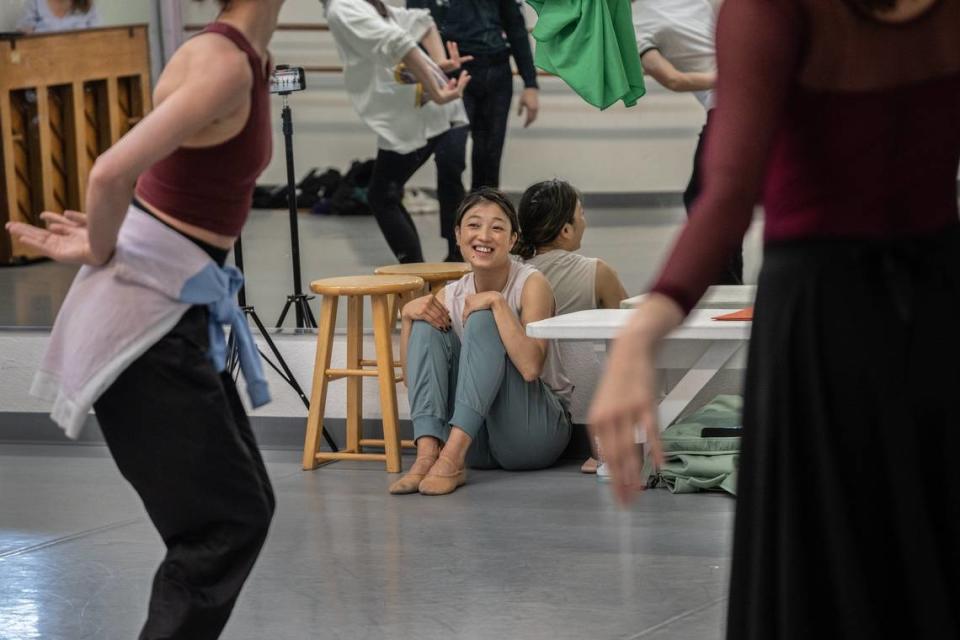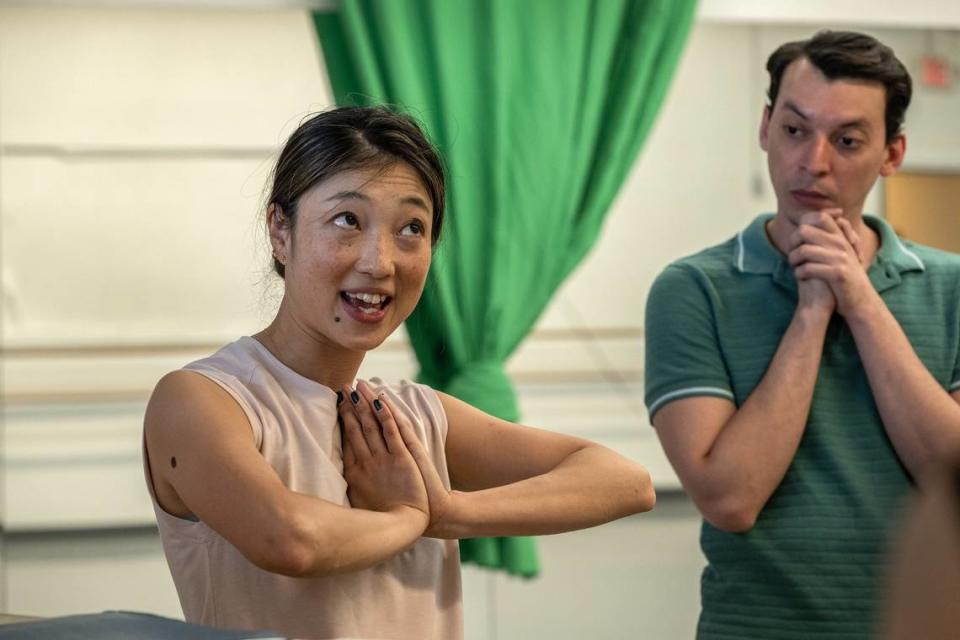How Sacramento dancers collaborated for sensory-friendly ballet based on Japanese legend
Sensory Friendly Dance, a Sacramento program which holds specially-designed performances for neurodivergent children, has created an all-original ballet based on the legend of the Japanese Star Festival, Tanabata.
Originating in Chinese legend, Tanabata is the story of Orihime and Hikoboshi, two star-crossed lovers who were separated by the Milky Way— only destined to meet once a year on the seventh day of the seventh month. When Alexandra Cunningham created Sensory Friendly Dance, she wanted to make the world of performing arts accessible to everyone, including those who may struggle to sit through a full-length theater production.
“The theater is a place for everybody and should welcome everyone,” said Cunningham, a former dancer with the Sacramento Ballet.
This year’s production of “Tanabata – The Story of Orihime & Hikoboshi,” which will be performed Saturday afternoon at B Street Theater, embodies traditional Japanese culture combined with original choreography, handmade costumes and watercolor set designs.
These are the creators behind it.
Kaori Higashiyama
Choreographer of “Tanabata – The Story of Orihime & Hikoboshi”
Kaori Higashiyama said this production is the biggest project she’s taken on in her 10 years as a professional choreographer – it’s also the first time someone’s transformed the legend of Tanabata into a ballet.
“This year Alex gave me the great opportunity to choreograph my own ballet,” Higashiyama said. “I thought that would be a great opportunity to showcase another, different culture to the audience.”
Higashiyama recruited dancers from Sacramento Ballet’s company and pre-professional ballet school to use in her performance. With just two weeks of rehearsals to teach them the choreography, Higashiyama said she didn’t mind the rush because the whole process “has been a joy.”
“Some of the people were actually involved with Sensory Friendly Dance from the last few years,” she said. “They’re my dancer friends.”

Higashiyama based her production on the legend of Tanabata, a Japanese holiday celebrated annually on July 7, in hopes that it would encourage audience members to attend the festival, which is just a couple of weeks after the performance.
“It was perfect timing,” she said.
When she performed in last year’s “Peter Rabbit” by Sensory Friendly Dance, Higashiyama said she enjoyed seeing the reactions of the children from the stage. She believed all kids should have access to the joys of dancing, the beauty of ballet and the overall theater experience.
In her approach to the ballet’s choreography, Higashiyama said she is focusing less on technically-advanced ballet steps and more on animated movements that will make it easier for the children to follow.
“I try to make it simple enough that it’s easy enough for them to understand,” she said. “I just want to see a smile on their face and, if we can, inspire them to dance.”
Emi Mizuno
Set designer of “Tanabata — The Story of Orihime & Hikoboshi”
Emi Mizuno, who has created set designs for Sacramento Ballet’s “Nutcracker,” said she hadn’t planned on working this summer when Higashiyama invited her to create the sets for “Tanabata.” Mizuno said she agreed to help because she was eager to see the Japanese tale set on stage.
“This is maybe the first time this story was made into a ballet,” Mizuno said. “I’ve never seen a ballet version of this story, so I’m excited.”
Using a combination of black paper cutouts layered against a watercolor background, Mizuno created nine sets that would transport the ballet along a starry river. Mizuno found that the flowing look of the watercolor best illustrated the tale’s setting on the Milky Way.
“I don’t do watercolor that much, so I’m experimenting a lot,” she said.

This is Mizuno’s first time designing sets for Sensory Friendly Dance and said the adjustment in lighting for a sensory-friendly performance influenced her design approach.
“They said they couldn’t turn off the lights to the audience, but that makes the room really bright, which makes it hard to see the background,” Mizuno said.
As the dancers perform on stage, the silhouette of their shadows becomes a lively part of the watercolor background. Since the house lights will be left on during the production — normally turned off in a traditional theater setting — Mizuno opted to use darker watercolors and adjust the position of the lighting to bring her set to life.
Arts like ballet are often perceived as something reserved for older, more mature audiences, Mizuno said, and children who can be louder “are often not allowed in that kind of space.”
“Ballet is such a comprehensive art. It’s a collaboration of dance, visual art, costume, music, lighting, storytelling — pretty much all kinds of art except for literal words,” Mizuno said. “Ballet doesn’t have words, but instead it speaks to our senses.”
Jaime Orrego
Costume designer of “Tanabata — The Story of Orihime & Hikoboshi”
Jaime Orrego has been involved with Sensory Friendly Dance since its inaugural performance in 2017, both as a costume designer and a performer. This year, however, is the first time Orrego has created an entirely original, handmade costume set for Sensory Friendly Dance.
“I wanted to fuse a lot of Asian cultures which celebrate this holiday,” Orrego said, adding that his goal was to incorporate both the Chinese and Japanese cultures.
Orrego consulted with Higashiyama, who also has experience in costume design, to understand her vision for the potential colors, fabrics and designs in the production’s wardrobe. The cow’s character, Orrego said, would include a kimono-samurai look, but still represent cow features, with ears, hoofs and a tail.

He avoided traditional spandex and other stretch material normally seen in ballet costumes and instead utilized cotton and baroque.
“It’s more like everyday wear, with a lot of different prints that have the feel for water or spring and nature,” Orrego said. “A lot of painted material.”
Orrego handmade a total of 12 to 13 costumes, spending around 12 hours on two costumes at a time. Not only is he the designated costume designer, but also plays the role of the Father in the performance.
“Whenever we’re done with rehearsals I go back and continue working until I can’t see anymore,” he said.

